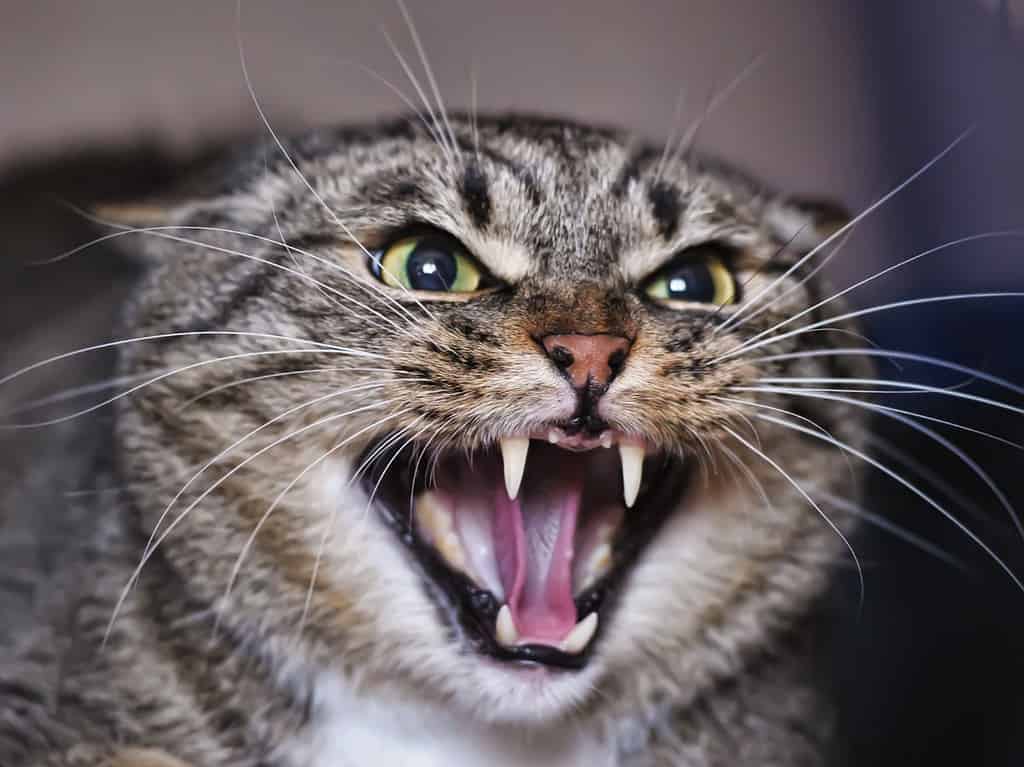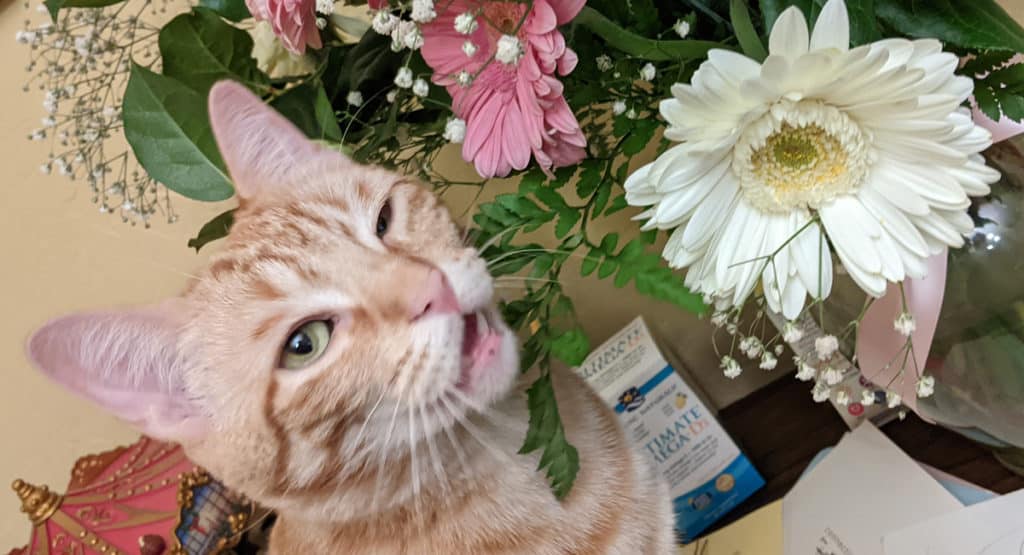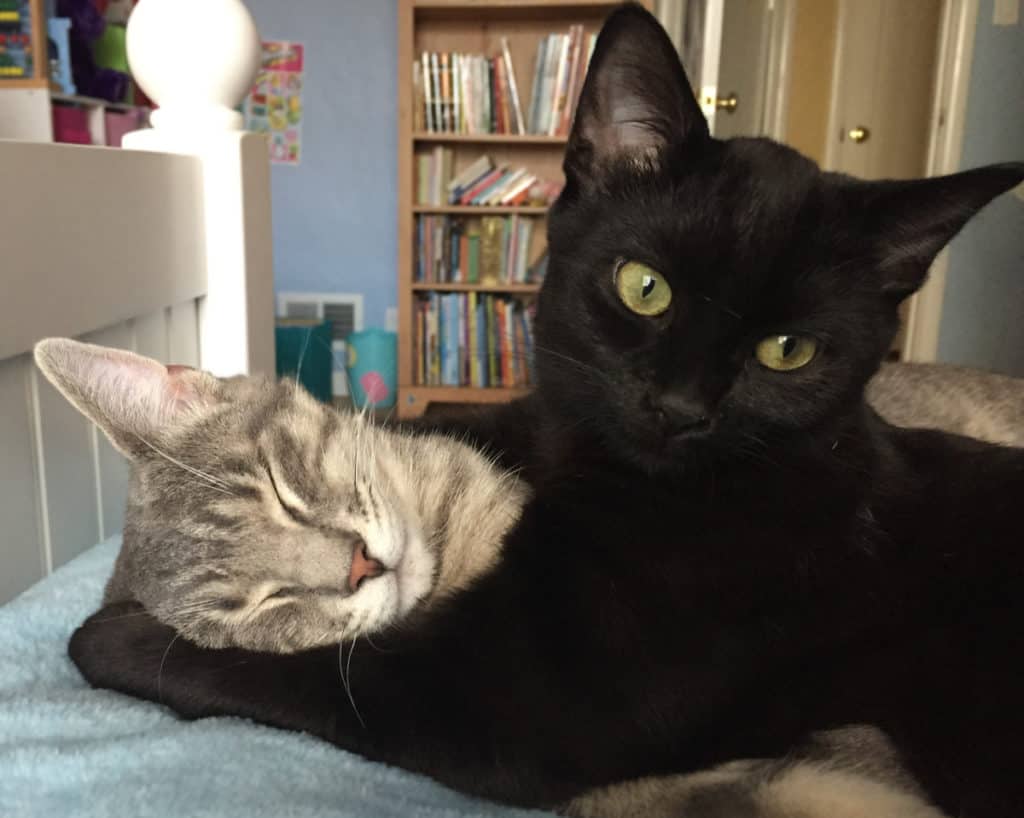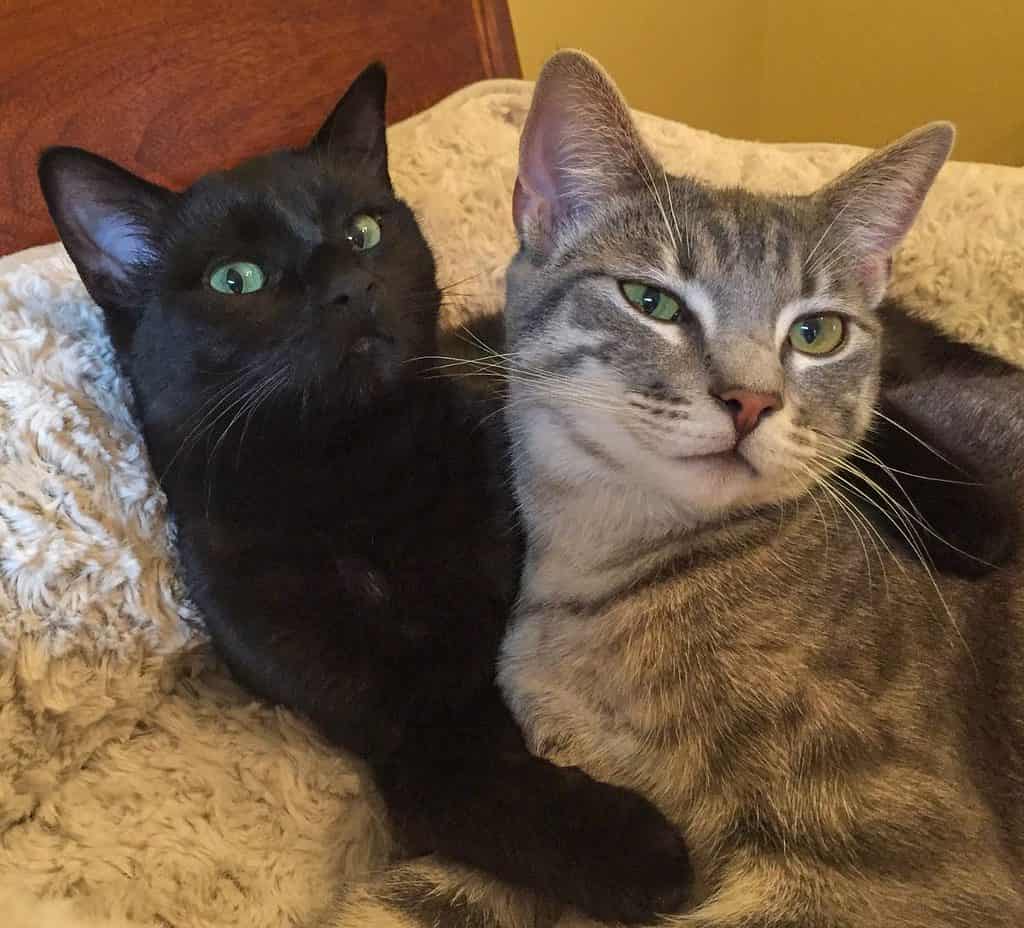Zoosemiotics is the study of how animals communicate. For example, dogs tend to wag their tails when happy. Birds sing songs and chirrup to communicate with other birds.
Therefore, the zoosemiotics of cats is the study and interpretation of the vocal, body, olfactory, tactile, and visual cues that cats use to communicate their emotions and needs.
Cats have a wide repertoire of how they communicate. Cats will use vocalizations, body posture, tail position, and scents to communicate with other cats as well as humans.
Origins of zoosemiotics
The word was developed by the semiotician Thomas Sebeok who first proposed the term in 1963.
Sebeok, at the time of his development of the term wrote,
“The term zoosemiotics – constructed in an exchange between Rulon Wells and me – is proposed for the discipline, within which the science of signs intersects with ethology, devoted to the scientific study of signalling behavior in and across animal species.
The basic assumption of zoosemiotics is that, in the last analysis, all animals are social beings, each species with a characteristic set of communication problems to solve.”
The noun zoosemiotics is the concatenation of “zoo” (from the Greek zoion for animal) and “semiotics” (all from the Greek sēmeiotikos which means ‘of signs,’), the study of signs and their meaning.
This BBC video takes a look at how cats communicate with both humans and other cats in urban England. Cats communicate through body language from rolling on the ground, how their tails are held, and the position of their ears.
Ways that domestic cats communicate
Vocalization in cats
Cats have a wide range of vocalizations they use to community which includes purring, meowing, hissing, yowling, trilling, and chirping.
While many of these vocalizations are used by cats to communicate with other cats, meowing as a form of communication by adult cats is mostly reserved for interacting with humans.

Meowing is reserved for communicating with humans
Adult cats very rarely meow to other cats. Meowing is considered a dependent communication and is used by the cat to convey to their owners that they need something, whether it be food, attention, or something else.
Adult cats’ meows have been specifically adapted for human interaction, not interspecies communication. Each cat’s meow is distinct, making it an individual language between the pet and its owner.
Urgent purring in cats
Purring, a rhythmic vocalization, often signifies contentment but can also express distress or discomfort. A loud, fast purr, often called “urgent purring” is another form of vocalization used by cats to demand food or other things.
Body Language in cats
Cats also communicate effectively through body language.
The positioning of a cat’s tail, for example, serves as a clear visual sign of their emotional state. An erect tail often indicates a relaxed and friendly mood, while a bushy tail symbolizes fear or aggression.

Similarly, a cat’s ears and whiskers provide additional clues. Forward-facing ears and relaxed whiskers usually signify curiosity or contentment, while flattened ears and pulled-back whiskers may indicate fear or hostility.
Cats use scents to communicate
Olfactory communication in cats is significant but often overlooked due to humans’ limited olfactory abilities.

Cats mark their territories by releasing pheromones from special glands in their cheeks, paws, and other body parts. This marking behavior, often mistaken as simple rubbing, serves as a crucial scent-based message to other cats.
Communicating through touch
Cats exhibit a range of tactile communication forms, from grooming to head rubbing, kneading, and playful or aggressive batting. These physical touches are integral to their social interactions and relationships.

A head rub or a slow blink, often referred to as a “cat kiss,” is a sure sign of trust and affection in the cat’s world.
Visual Signals
Finally, cats use visual signals, such as varied postures and facial expressions, to communicate.
An arched back with fur standing on end is a clear signal of fear or aggression, while a cat exposing its belly is demonstrating trust or a desire for play.
References
Henning, J. S. L., Nielsen, T., Fernandez, E., & Hazel, S. (2022). Factors associated with play behavior in human-cat dyads. Journal of Veterinary Behavior, 52, 21-30. https://doi.org/10.1016/j.jveb.2022.05.007
Jaroš, F. (2016). Cats and human societies: A world of interspecific interaction and interpretation. Biosemiotics, 9(2), 287-306. https://doi.org/10.1007/s12304-016-9253-8
Jaroš, F. (2017). The three semiotic lives of domestic cats: A case study on animal social cognition. Biosemiotics, 10(2), 279-293. https://doi.org/10.1007/s12304-017-9295-6
Skripchenko, R., & Burlakov, I. (2022). The Cat’s Meow–Feline Translations. Technology and Language, 3(3), 22-37. https://doi.org/10.48417/technolang.2022.03.03
This article was originally written on December 12, 2020 and has since been updated.







